Bringing Home Serene
One couple found that the best way to get their brand new catamaran home from France was to sail it in the company of fellow ARC cruisers
Sailors have crossed the Atlantic from the Canary Islands to the Caribbean following the trade winds since Christopher Columbus first made land fall. The Atlantic Rally for Cruisers’ Las Palmas to Saint Lucia route is popular with cruisers wanting to make the leap in the company of fellow sailors. So it’s no surprise that when Michael and Jill Holt were tasked with bringing home their brand new Excess 14 from France they found comfort in the company of the ARC.
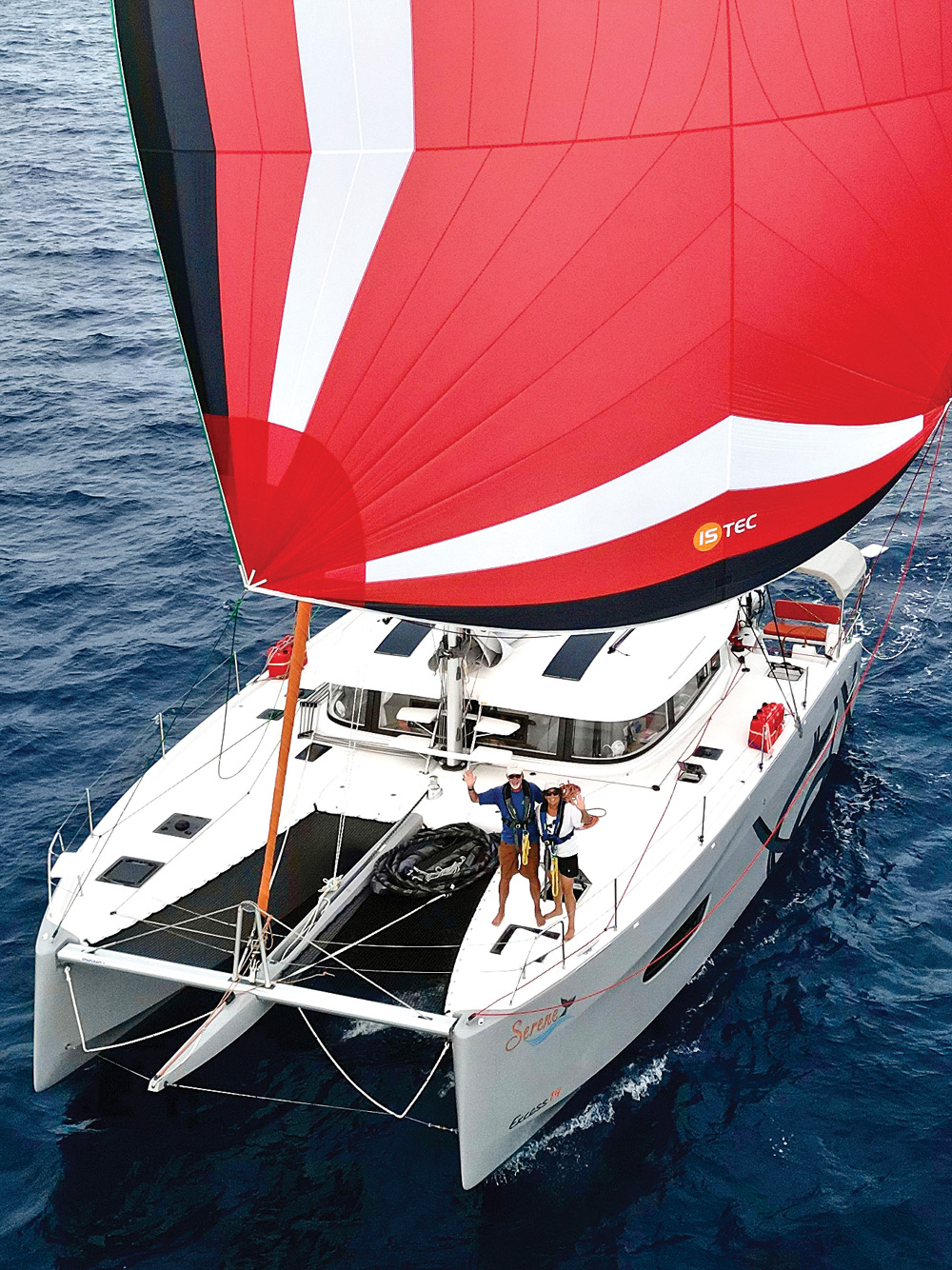
We were joined by my longtime sailing mates Mike and Kathy Rigo, and after a perfect afternoon sail filled with sunshine, the Los Angeles beaches and good bottle of Admiral Rodney HMS Royal Oak Rum, we formed the ARC crew
for Serene.
The Holts were in the early stages of planning for the Atlantic crossing. As a sailing instructor, I want students to enjoy their experience on the water and this was a great opportunity to help them fulfill their dream. During the ensuing months, we received updates from the commissioning process in Les Sables d’Olonne and had multiple video chats.
Serene was launched in August 2023, and the Holts spent the next few months cruising from La Rochelle, France, to Spain, Portugal, Gibraltar, and Morocco before arriving in Gran Canaria on October 19. Final preparations began for the ARC which included additional support from Excess and Groupe Beneteau. There were six Excess catamarans participating in the ARC, and Excess replaced Serene’s steering cables and installed additional rudder support at no cost to the Holts to ensure the boat was in tip-top condition for the crossing.
The ARC is an incredibly complex event, and the organization offered plenty of support to the 157 participating boats. Seminars were provided on a range of topics associated with offshore cruising—weather routing, heavy weather tactics, provisioning, safety equipment and first aid. Rigorous checklists needed to be satisfied before boats are allowed to participate.
As the date neared, everyone’s excitement was palpable, even over the video chats. Our departure date was Sunday, November 19. The Rigos and I had arrived a week before, and there were several celebrations and events for crews leading up to departure. The Holts took care of provisioning and equipping Serene.
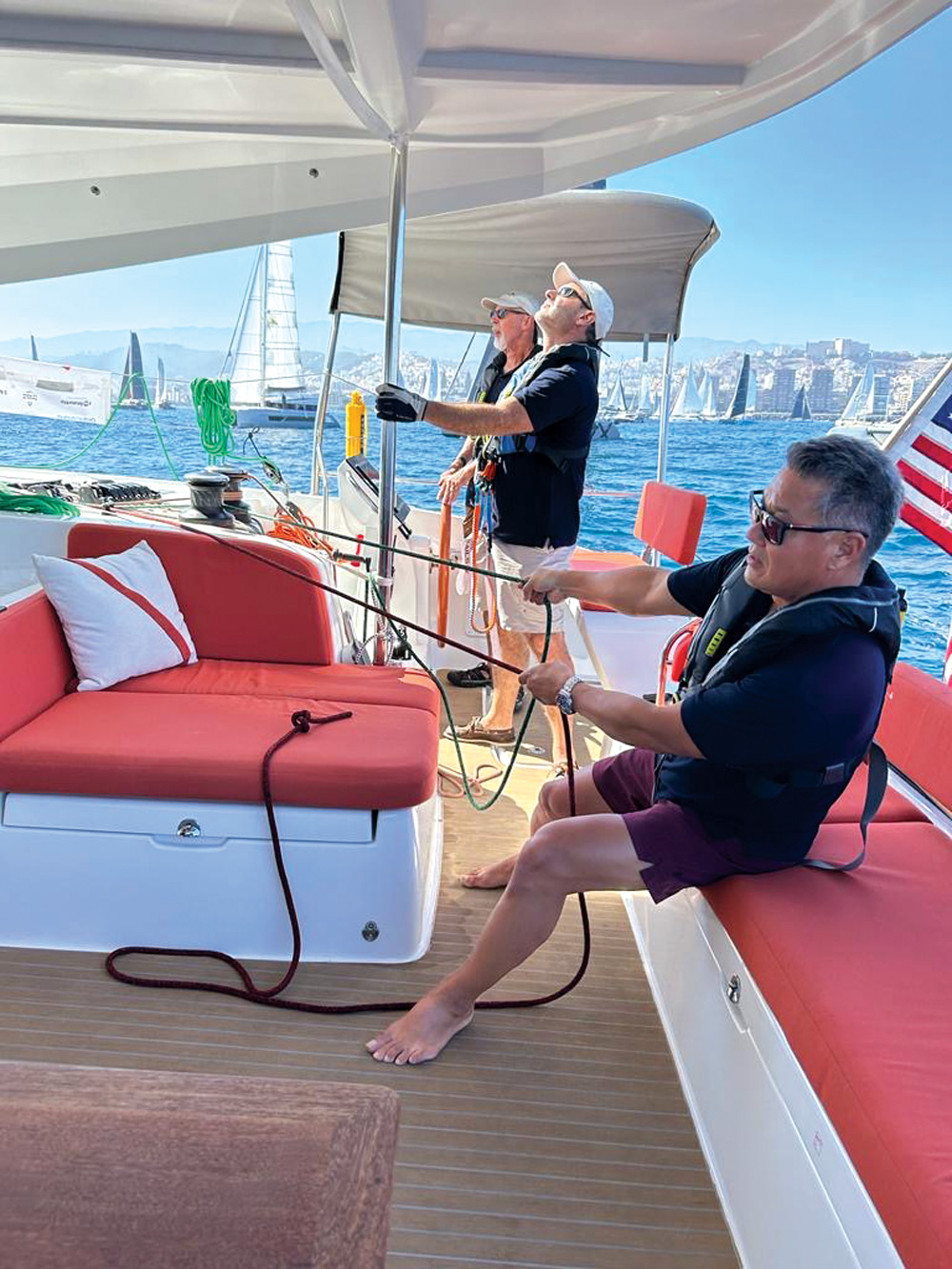
I quickly came to the conclusion that all the electrical appliances—microwave, bread maker, coffeemaker, induction cooktop and toaster oven—would have to be idle for the crossing and cooking would have to be done with gas. The amperage draw by those electric appliances would be too much for the limited diesel fuel we planned to carry.
On departure day, the port of Las Palmas was transformed into a colorful and joyful event with hundreds of well-wishers lining the harbor, sailboats from all over the world and a Spanish Navy warship to fire its cannon to start the different classes. The multihulls gathered for the start and we were off.
The Azores High was being disrupted by multiple low-pressure systems to the north, so the winds down the coast of West Africa were a light 5 to 10 knots. The first 1,000 miles saw slow going, and we averaged only 5.67 knots, but the dust from the Sahara Desert created some beautiful sunsets and the Canary Current, about a half to one knot, helped us along our route.
This was the part of the voyage where we put theory into practice. We monitored boat systems, managed critical resources like water, electricity and fuel as the crew settled into watch schedules. With this crew of five, two were on watch at night and we followed a four-hour watch rotation.
We prioritized electricity for the boat electronics, lights, two fridges, two freezers and the watermaker, and we decided to forgo water for showers to conserve water and diesel fuel to run the engine alternators and “stay ahead of the curve.” Whether it was cloudy or sunny, we still ran the watermaker for at least an hour each day to top off the water tank. We also limited Starlink (which performed remarkably well) usage to periodically getting weather updates and checking emails and texts to conserve power. By the end of the voyage, we only used 44 out of the 136 gallons of diesel.
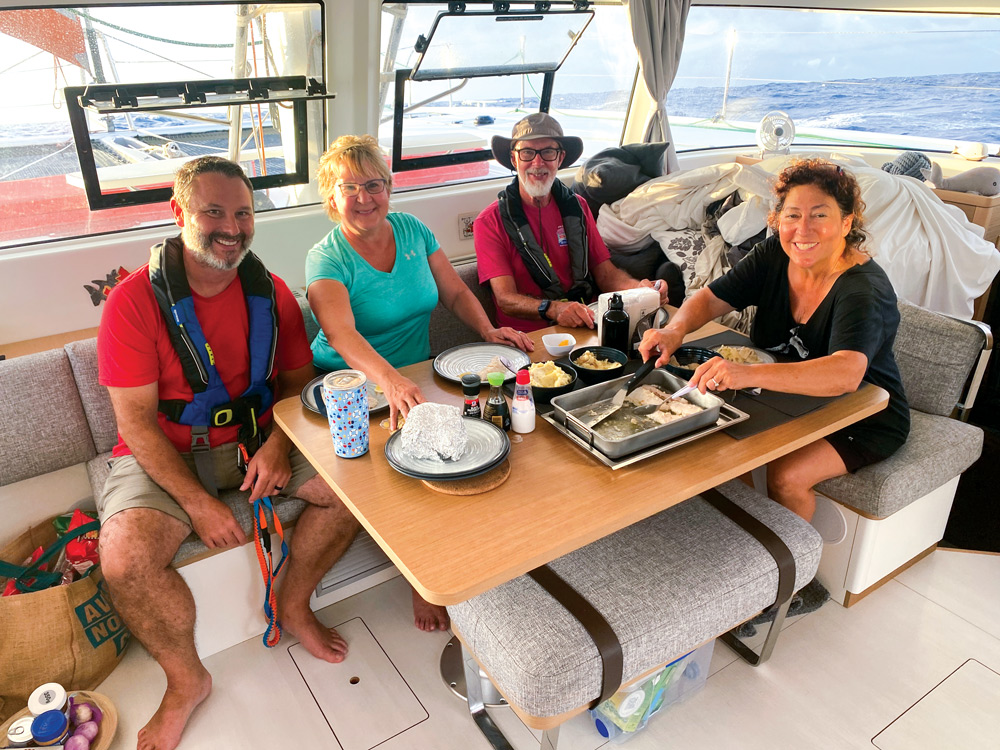
As we headed increasingly westward during the second 1,000 miles, we saw increasing wind of 15 to 20 knots and we were able to fly the Parasailor spinnaker for nearly 10 days straight. Water temperatures were slightly warmer around 80 degrees, and we tried our luck fishing with hand lines. For days, there was no action on the lines, and then suddenly we caught a skipjack and a wahoo within an hour. Flying fish were a constant presence during the entire trip. We’d find one or two on the deck in the morning and Jill and Michael each were hit by flying fish at night.
The night skies were quite memorable with Orion, Pleiades and the Big Dipper rotating around Polaris and watching the moon pass through all its phases. Numerous squall lines crossed our route over the last 1,000 miles, and we had to maneuver to avoid the weather. Since we didn’t shower during the trip, we took squall showers when possible.
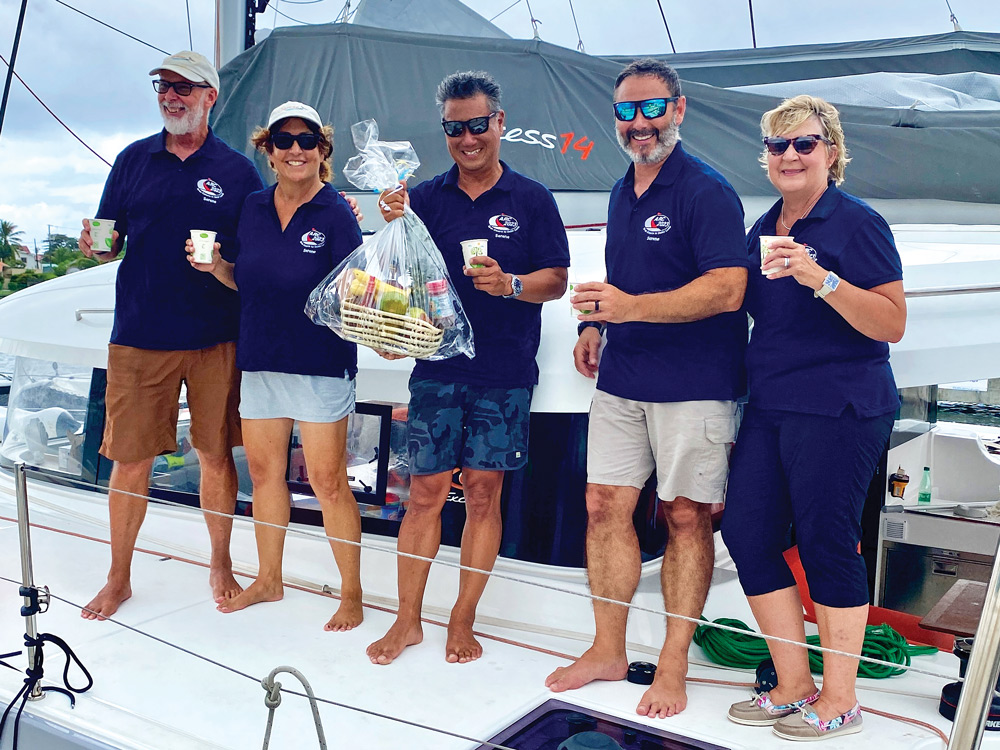
We arrived in Saint Lucia after 20 days, 3 hours, 44 minutes and 36 seconds, but the ending wasn’t what we expected. We were sailing under Parasailor and no main in about 20 knots of wind when the boom topping lift parted with a bang. We placed a fender under the boom to secure it above the hard top and I made a mental note that when not using the mainsail for long stretches, it’s best to lower the boom onto a fender to take the load off the topping lift.
Then, about five miles from the finish, my heart sank when the Parasailor tore. While dousing the remnants of the Parasailor, I asked Michael to turn the engines on not realizing I hadn’t accounted yet for all the sheets. One sheet had run through its block ending up in the water, fouling on the port prop. We focused on the task at hand and unfurled the jib. With the jib alone, we crossed the finish line in Rodney Bay after sailing 3,053 miles. Without wasting a minute longer, we docked in the marina and were greeted with smiles by the ARC organizers with a basket of fruit and rum.
Much appreciation goes out to Mike and Kathy Rigo for being outstanding crew and friends. And a huge thank you to the Holts for their confidence in all the crew but more importantly confidence in themselves to take the courageous steps to buy a boat and live the dream. Since the ARC, the Holts have journeyed throughout the Caribbean and up the U.S. Atlantic Coast, sharing the experience with family and numerous friends. Their dream of living on a sailboat and immersing themselves in the wonders of cruising life got quite a send-off with an unforgettable experience of a lifetime.
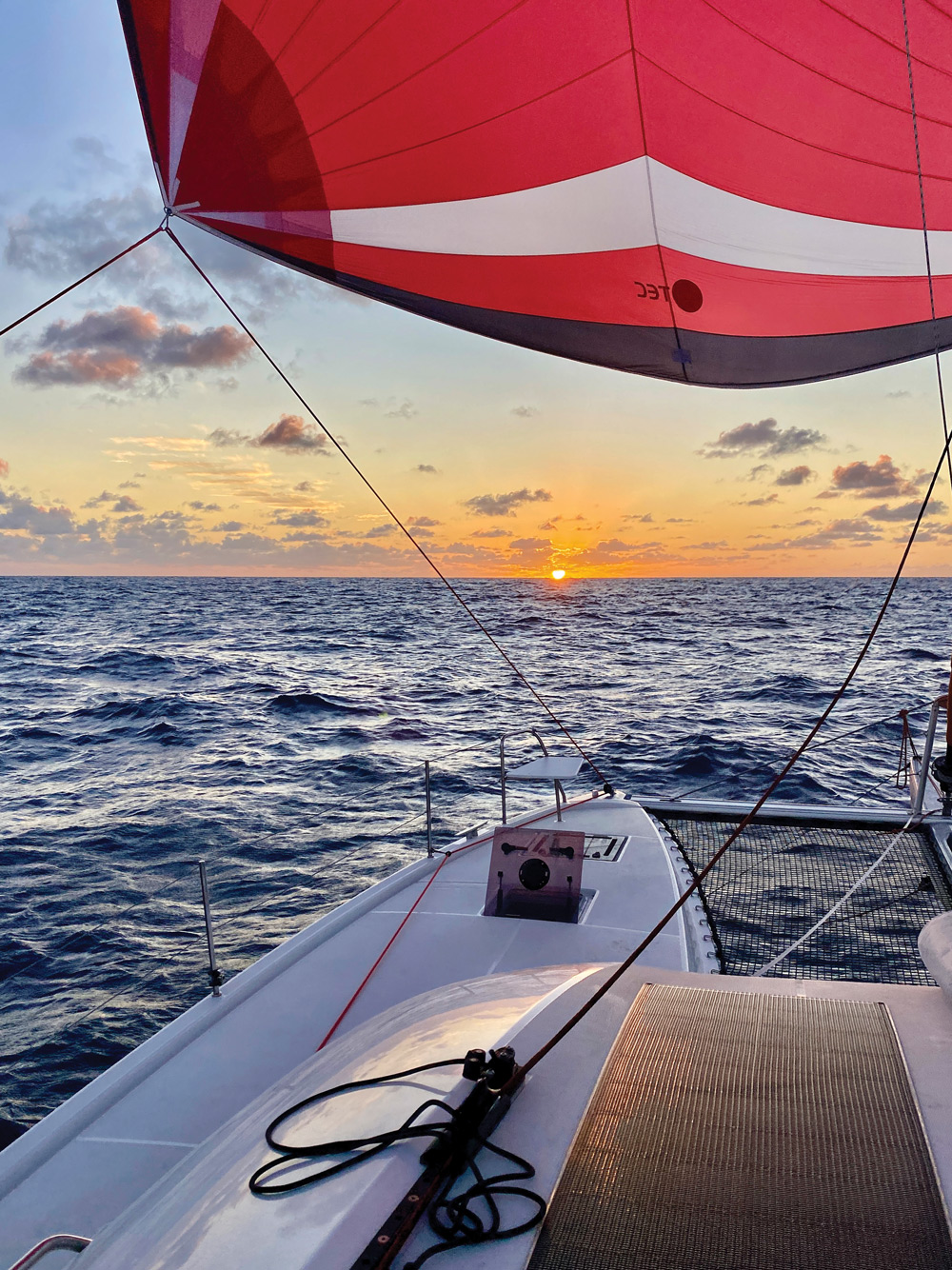

Comments